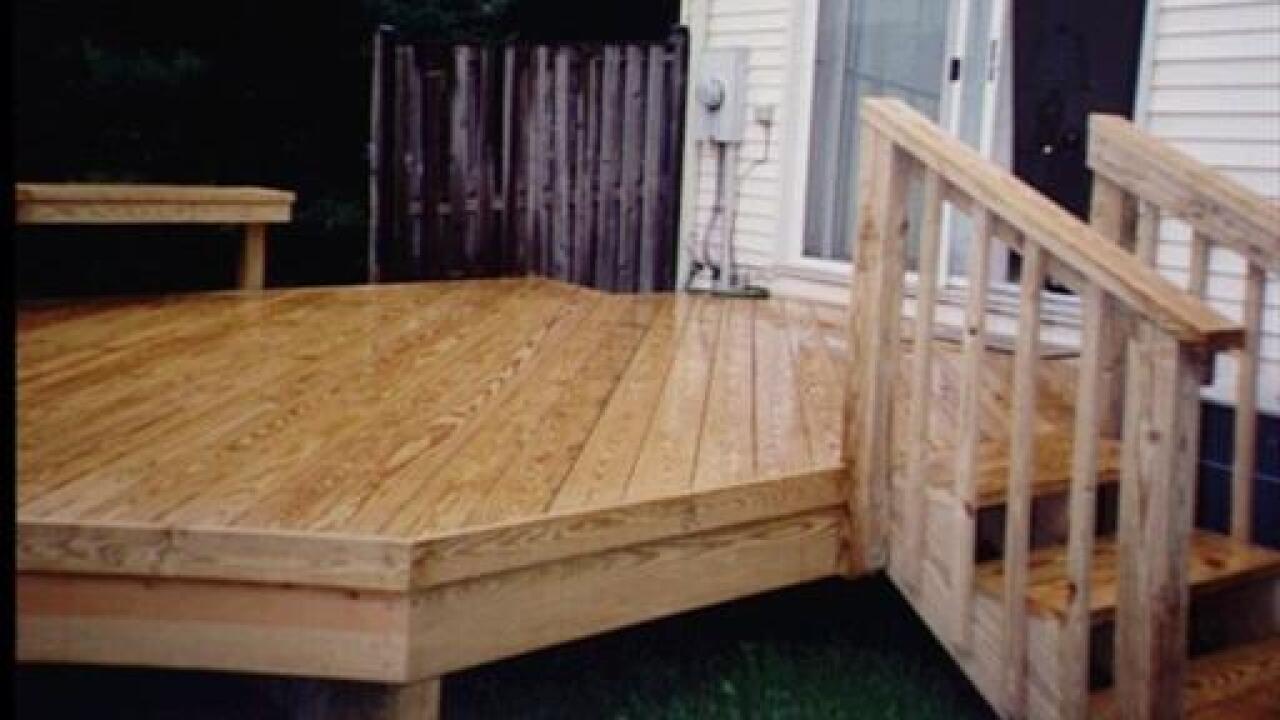KANSAS CITY, Mo. — Lumber prices are sky high, but it’s also building season, especially for do-it-yourselfers with outdoor projects planned, like decks and sheds.
Early in the COVID-19 pandemic, people flocked to home-improvement stores, wiping out the retail lumber supply during a flurry of DIY activity in the late spring and early fall of 2020.
That helped drive lumber prices to record levels, which begs the question: Should I redo my deck this summer or wait until the market settles down and the price of lumber drops?
“I want to say wait, but if you would have followed that advice from July of last year onward, you would have been completely hosed,” Stinson Dean, who owns Deacon Lumber and is a lumber trader, said. “The price has only gone up, because everyone has waited.”
IN-DEPTH COVERAGE | Supply-chain strain
RELATED | Squeezed supply chains lead to rise in inflation
RELATED | Pricing trends for some commodities raises concern
RELATED | 'Spiraled out of control': Exploring COVID-19 pandemic’s last effect on supply chains
RELATED | Kansas City workforce 'paralyzed' by incentives to not work
The supply of Canadian spruce, which is most often used as framing lumber in homebuilding, is a big factor in the lumber market’s price inflation, but it’s not as commonly used in deck-building.
Southern yellow pine is abundant. It’s stronger and denser than spruce, but it’s also harder to work with because of that density and is more prone to warping.
Still, it’s a fine choice for deck framing, while heartwoods, like cedar and redwood, are more common for the rails and decking.
As sawmills begin to restock inventory, lumber prices will come down, but the homebuilding boom and ongoing DIY craze might keep prices elevated.
“I do think lumber is higher for longer,” Dean said.
While he doesn’t expect prices to remain at record levels, Dean said he suspects lumber prices will remain significantly higher than pre-pandemic levels for years — and might never completely revert to old prices.
“If you quoted this thing before COVID, you’re just not going to meet that budget anymore,” Dean said. “... The supply-demand dynamics just do not lend themselves to correcting to previous trading ranges.”
But there is a glimmer of hope.
Dean said lumber demand in Kansas City often slows in the sweltering summer months, especially July and August, which might lead to a small price dip.
It won’t be a market correction, but it might save some cash on larger-scale projects that require lots of lumber.

—






